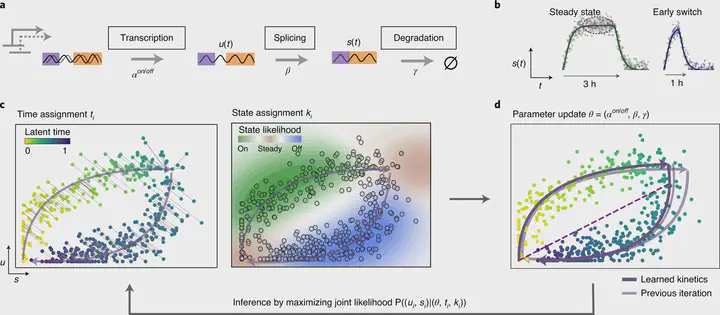 scVelo generalized RNA velocity to transient populations through a dynamical model of splicing kinetics.
scVelo generalized RNA velocity to transient populations through a dynamical model of splicing kinetics.Abstract
RNA velocity has opened up new ways of studying cellular differentiation in single-cell RNA-sequencing data. It describes the rate of gene expression change for an individual gene at a given time point based on the ratio of its spliced and unspliced messenger RNA (mRNA). However, errors in velocity estimates arise if the central assumptions of a common splicing rate and the observation of the full splicing dynamics with steady-state mRNA levels are violated. Here we present scVelo, a method that overcomes these limitations by solving the full transcriptional dynamics of splicing kinetics using a likelihood-based dynamical model. This generalizes RNA velocity to systems with transient cell states, which are common in development and in response to perturbations. We apply scVelo to disentangling subpopulation kinetics in neurogenesis and pancreatic endocrinogenesis. We infer gene-specific rates of transcription, splicing and degradation, recover each cell’s position in the underlying differentiation processes and detect putative driver genes. scVelo will facilitate the study of lineage decisions and gene regulation.